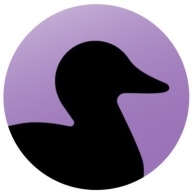

SonarQube and Coverity Static compete in the static code analysis category. SonarQube appears to have the upper hand due to its open-source adaptability, cost-effective community edition, and strong community support, whereas Coverity Static is noted for its deep scanning capabilities and robust vulnerability detection.
Features: SonarQube is valued for its extensive plugin availability, support for multiple programming languages, and seamless integration with CI/CD tools. Coverity Static is distinguished for its deep scanning ability, low false positive rate, and the capability to detect security vulnerabilities in complex code.
Room for Improvement: SonarQube users suggest expanding its security features, smoother integration with external systems, and handling of false positives more efficiently. Coverity Static could enhance its integration process, reduce its high false positive rate, and improve documentation and support for modern frameworks.
Ease of Deployment and Customer Service: SonarQube supports flexible deployment across hybrid, on-premises, and cloud environments, benefiting from active community support. Coverity Static predominantly supports on-premises settings, limiting its flexibility, with perceived slow official support compared to SonarQube.
Pricing and ROI: SonarQube's community edition is cost-effective with no licensing fees, appealing to budget-conscious organizations, while enterprise pricing remains competitive. Coverity Static is critiqued for its high cost, which scales with user count, though it justifies this with detailed vulnerability insights.
| Product | Market Share (%) |
|---|---|
| SonarQube | 18.8% |
| Coverity Static | 4.7% |
| Other | 76.5% |
| Company Size | Count |
|---|---|
| Small Business | 8 |
| Midsize Enterprise | 6 |
| Large Enterprise | 31 |
| Company Size | Count |
|---|---|
| Small Business | 41 |
| Midsize Enterprise | 24 |
| Large Enterprise | 79 |
Coverity gives you the speed, ease of use, accuracy, industry standards compliance, and scalability that you need to develop high-quality, secure applications. Coverity identifies critical software quality defects and security vulnerabilities in code as it’s written, early in the development process, when it’s least costly and easiest to fix. With the Code Sight integrated development environment (IDE) plugin, developers get accurate analysis in seconds in their IDE as they code. Precise actionable remediation advice and context-specific eLearning help your developers understand how to fix their prioritized issues quickly, without having to become security experts.
Coverity seamlessly integrates automated security testing into your CI/CD pipelines and supports your existing development tools and workflows. Choose where and how to do your development: on-premises or in the cloud with the Polaris Software Integrity Platform (SaaS), a highly scalable, cloud-based application security platform. Coverity supports more than 20 languages and 200 frameworks and templates.
SonarQube provides comprehensive support for multi-language development, custom coding rules, and quality gates, integrated seamlessly into CI/CD pipelines. It empowers teams with clear insights through intuitive dashboards, identifying vulnerabilities, code smells, and technical debt.
SonarQube is renowned for its extensive capabilities in static code analysis, making it an invaluable tool for maintaining code quality. By fully integrating into development processes, it allows organizations to manage vulnerabilities and ensure compliance with coding standards. Its extensive community and open-source roots contribute to its accessibility, while robust dashboards facilitate code quality monitoring. Despite its strengths, feedback suggests enhancing analysis speed, better integration with DevOps tools, and refining the user interface. Users also point to the need for handling false positives effectively and expanding on AI-based features for dynamic code analysis.
What are SonarQube's main features?In industries like finance and healthcare, SonarQube aids in obtaining regulatory compliance through rigorous code quality assessments. It is implemented to enhance cybersecurity by identifying potential vulnerabilities, while ensuring code meets the stringent standards demanded in these fields. As part of a broader development ecosystem, its integration in CI/CD pipelines ensures smooth and efficient software delivery, catering to phases from code inception to deployment, effectively supporting large-scale and critical software applications.
We monitor all Static Application Security Testing (SAST) reviews to prevent fraudulent reviews and keep review quality high. We do not post reviews by company employees or direct competitors. We validate each review for authenticity via cross-reference with LinkedIn, and personal follow-up with the reviewer when necessary.